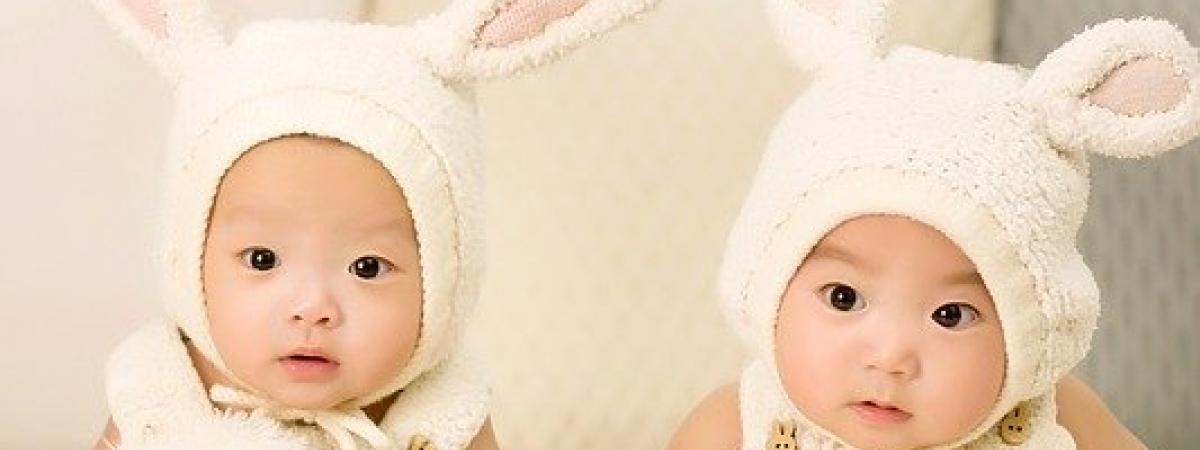Twins - nature or nurture?

Twins have been of interest to scholars since early civilization; my twin sister and I would have definitely made an impression. Unwittingly, and perhaps unwisely, my twin and I shared absolutely identical lives until the age of 21.
We may have left the shared womb at birth but our lives remained indistinguishable and interchangeable until adulthood. We shared the same bedroom, the same friends (though we mainly talked only to each other), the same school class, the same diet, the same clothes (my parents would travel the country to find matching outfits, when a shop stocked only one of a particular dress), the same illnesses (we both had grommets inserted on the same day) and the same life experiences (we both started walking at the same moment, in different rooms, at 22 months old). We went to the same University to study the same subject; I slept on her bedroom floor most nights so as not to be parted.
Twin studies are used to clarify the influence of nature versus nurture in different traits and disorders. Having shared identical environments for 21 years, and the same genes since birth, we are of interest to medical science. After all, if we are such clones of each other, why do only I wear glasses? Why did only I suffer from insomnia throughout childhood? Why did I find academic work easier? Why did only I experience an epileptic seizure and severe acne?
Increasing insight as we age
We are turning 40 next year, and since the age of 21, our lives have thankfully diverged. We are both married (and living round the corner from each other – the bond is hard to break completely). My sister has 3 children and works in administration. I have no children, and work as a nurse and writer.
As my sister rises at 5:45am each day and copes with the demands of being a mother, I cherish my quieter home life, but know the stresses of working in a nursing home. Whilst I am in the library, she is more likely to be doing the laundry. As we age, we might start to differ.
Professor Tim Spector and his team at TwinsUK are interested in studying this question: his registry comprises 12,000 sets of twins and is investigating the genetic and environmental causes of age-related traits and diseases, including everything from cardiovascular diseases to baldness. I would keenly take part in the TwinsUK study, if only my twin had the time to take part with me….
Our new twin study
My twin sister is the mother of beautiful identical twins. While she struggles to keep up with motherhood, I enjoy them as an aunt – and as a new twin study (their best interests at heart, and with mother’s full consent of course).
Unlike us, Florence and Jemimah are being brought up differently. Jemimah is more of a tomboy; they wear very different clothes. They are in different classes at school and encouraged to pursue different interests. How will this work out? Is it easier to make friends when you aren’t interdependent as a twin? Do you learn better at your own pace, or when spurred on by your twin?
Research suggests that, in some ways at least, nature will trump nurture whatever we do. In a report in New Scientist, Professor Robert Plomin and his team at King’s College London analysed GCSE results of 5474 pairs of twins. He found that “genes accounted for 52% of the differences between exam scores; a shared upbringing accounted for only 36% of the differences, with the remainder accounted for by environmental factors that weren’t shared, such as each twin having a different teacher”.
Matching mental health?
Whilst a child’s educational fate may be sealed, to some extent at conception, I’m convinced that mental illnesses like depression, anxiety, ADHD and schizophrenia are determined by both genetics and environment. This is supported in the literature where one twin is often reported as having schizophrenia or bipolar disorder, whilst the other twin does not. Epigenetics is thought to be the answer here: even though identical twins share the same genes, environmental factors such as stress, chemicals or even how much you sleep, can turn different genes on and off, determining whether you get a particular disease or not.
‘Folie à deux’ (or insanity of two) is an extreme example of mental illness that can, very rarely, be seen amongst identical twins; both genetic and environmental factors seem to be involved. In one graphic case study shared in the British Journal of Psychiatry in 1986, two extremely interdependent twins share paranoid delusions. They both believe that others are spreading rumours about their inferior intelligence; they think that they are time-travellers engaged in interplanetary travel, with special powers to ward off evil spirits. Treatment of folie à deux usually entails separating the affected individuals: evidence of some degree of environmental causation. Folie à deux is very rare (less than 300 cases have been published); that psychosis of association even exists though, is enough for my sister to encourage freedom of thought and spirit in her twins.
Palm-reading
Some things about twins are just plain baffling, and cannot be explained by nature or nurture. On both of my hands, I have a single transverse palmar crease (a line straight across my palm), and my twin sister does not (she has the more usual two separate lines, known as the ‘heart line’ and the ‘head line’). A single transverse palmar crease is often associated with genetic conditions such as Down’s syndrome or Klinefelter syndrome: not the case with me.
It’s difficult to explain our palmar peculiarities. Even more extraordinary (and heartwarming I think) is that Florence and Jemimah each have one hand with a single transverse palmar crease and one with two separate lines. My explanation? A sign that both their mother and I are there to hold each of their hands and nurture them as they grow.
